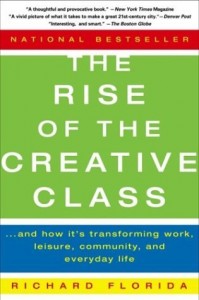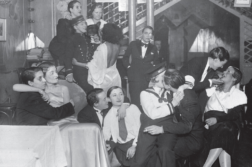Published in: July-August 2004 issue.
 The Rise of the Creative Class … and how it’s transforming
The Rise of the Creative Class … and how it’s transforming
work, leisure, community, & everyday life
by Richard Florida
Basic Books. 416 pages, $15.95 (paper)
ACCORDING TO Richard Florida, there are three conditions that encourage economic growth in the postindustrial economy: technology, talent, and tolerance. These elements are embodied in a new configuration of workers that comprise what Florida calls the “creative class.” These are the scientists, engineers, architects, educators, writers, artists, and entertainers whose function it is to generate new ideas, technologies, and creative content. They constitute some thirty percent of the U.S. workforce.






